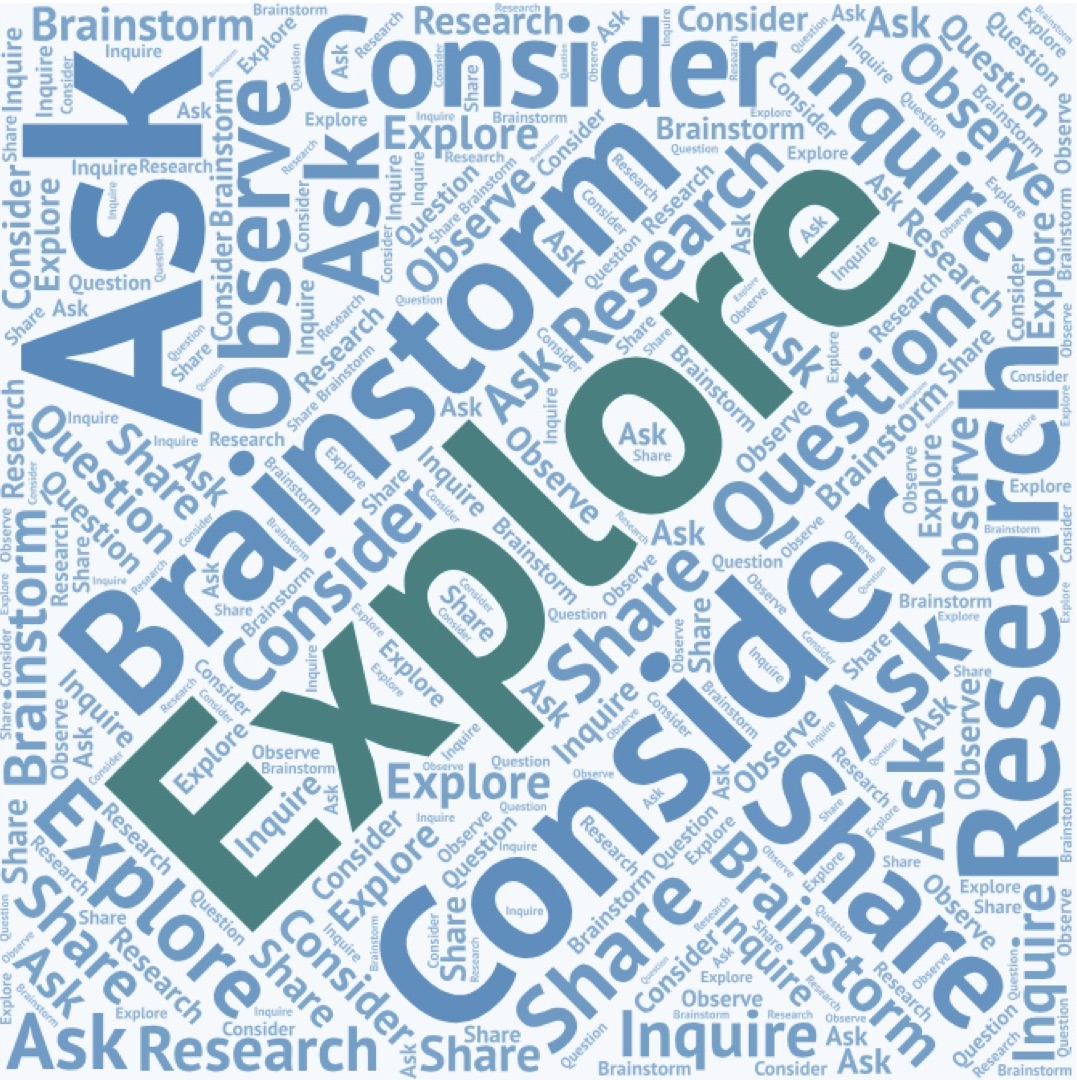Student Roadmap - Explore
Questions Come from Explorations and Experiences

Albert Einstein once said, "To raise new questions, new possibilities, to regard old problems from a new angle requires creative imagination and marks real advances in science."
So where do new questions, possibilities, and perspectives in science come from? Having an open mind and a playful attitude to explore over and over is a hallmark of an excellent scientist. It is true whether they have had a long distinguished career like Einstein or they are just beginning.
You might be wondering how you get started in science. Perhaps the most important thing you can do is to look closely at the natural world. Curiosity, creativity, critical thinking, and collaboration: these are all parts of who scientists are and how they work. And they should also be part of how you work with your teammates and scientist mentor.
Muck Around with It
A key starting point is carefully observing while "mucking around." Don't worry about your initial observations and ideas being part of your "official" investigation. Look at the organism or object from all angles in order to get to know it. Consider how the organism relates to the bigger system.
Think Like a Plant – Explore What You Know
Explore what you know about plants and the science topic from your own experiences outside of school. Also consider the discussions and demos you've been doing the past few classes.
What do you see with plants everyday? Try to think like a plant. Consider what you know about plants. Imagine you're biking on a blistering hot, sunny day. Do you try to bike in the shady part of the path? How about on those cold wintery days? Don't you put on a warm coat? Unlike humans, plants can't move. And they certainly don't have winter coats. So how do plants survive the challenges of a "stuck-in-the-soil" existence?
What is a "working model"?
Let's say you've been friended on FaceBook by Rob. Rob is a friend of your best friend. You've never met Rob, but you heard about him from your best friend, Andie. From Andie's description, you kind of have this picture of Rob in your head.
When you go to his FaceBook, he looks pretty different than what was in your head. Then you talk to him on the phone and he even sounds different than what you thought when you saw his picture. You finally meet him in person – and his personality isn't what you expect.
How you pictured him from your friend's description, what he sounded like, and what you thought he'd be like – these are all working models. They're temporary placeholders for Rob that get modified as you "collect data" about him from your best friend, FaceBook, a phone call, and a face-to-face meeting.
Brainstorm As a Team
Brainstorming ideas with others can open wide the possibilities for thinking about what you already know about a topic. As ideas bounce off each other, they can trigger questions you might be curious to explore more about.
Team up! Pair up with your teammates to brainstorm.
- Start with what you think you know about the questions.
- Keep a running list of questions that come up while brainstorming.
- If you get stuck, identify what makes sense and what doesn't.
- Notice where your ideas bump up against one another. Try to work through the two ideas until they make sense when you put them together. Usually, there's a missing link you have to dig out.
- Remember: this is not about right or wrong. It's about good reasoning based on what you think you know!
Questions can be fragments since you're still brainstorming them. By the end of your brainstorming session, you will have a set of questions to discuss with your scientist mentor and choose from. These questions are not meant to show off how smart you are.
In fact, some of the simplest questions are the best ones to investigate. Some of the best ones might also make you think that you SHOULDknow it. In reality, the difference between knowing something and understanding how it works is similar to the difference between being book-smart and being a problem solver.
Some questions will be eliminated as you brainstorm. You'll find you've answered your own question! Don't be concerned with creating if-then statements or hypotheses now. What you're doing here is more general brainstorming in an everyday thinking kind of way.
Make Sense of the Topic
Diagram or describe how you think things work in the organism or system you are observing. Like the brainstorming, this is not about being right or wrong. When you develop a working model, you can add and change it if you get new ideas or information.
Make Notes on Things To Research
Research is not just an experiment. Scientists use books, periodicals (which they call "journals"), and research reports from other scientists to study their problem. This process is called background research.
List the facts or ideas you know or think you know about before starting your research. List things you would like to find out more about so you can do your background research. These are notes and not a final draft. So lists, incomplete sentences, etc. are fine. Record your background research and the sources you used as your investigation gets underway.